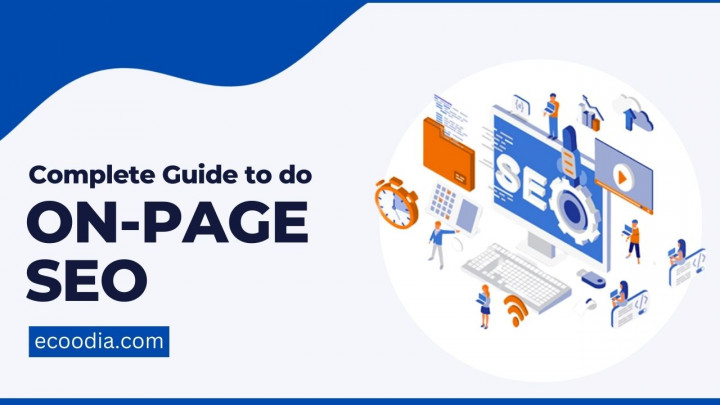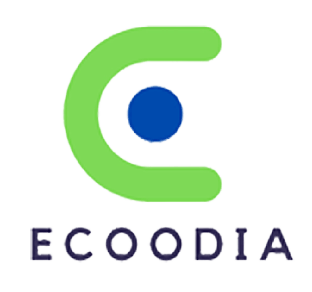Complete Guide to do on-page SEO in blogs sites and home page in 2022

On-page SEO is very important for organic traffic it tells Google everything about your website and value to visitors and customers on how you have provided.
It helps your website to be optimized for human eyes and search engine crawlers.
Creating and publishing your website isn't enough you need to optimize it for Google and other search engines to rank and attract new visitors.
On-page SEO is called on-page because the tweaks and changes you make to optimize your site can be seen by your on-page visitors.
Every part of on-page SEO is entirely up to you; that is why it is essential that you do it correctly.
Now, let's Guide to do on-page SEO in blogs sites and home page in 2022.
- High-Quality Page Content
- Page Titles
- Headers
- Meta Descriptions
- Image Alt-text
- Structured Markup
- Page URLs
- Internal Linking
- Mobile Responsiveness
- Site Speed
High-Quality Page Content
On-page content is at the heart of on-page SEO. It tells both search engines and readers all about your website and business.
First and foremost, create high-quality content while choosing relevant keywords and topics. Do keyword research by searching for terms on Google and see what shows up for competitors and other sites. You can also use free tools like Ahrefs, or UberSuggest.
Next, think about how your page content aligns with the buyer journey and visitor search intent. These will affect how you use your keywords and the type of content you create:
Here are some best practices for writing high-quality page content:
- Natural match for short and long keywords.
- Add visually appealing and relevant content.
- Write to your specific buyer(s).
- Proactively solve audience problems.
Maximize conversions with CTAs for offers and product pages. The content on page is your opportunity to convey value to Google and your website visitors; It is at the heart of the on-page SEO process.
All other on-page SEO factors come from high-quality on-page content, so invest enough resources to develop and optimize it.
Read More : Powerful Way to Boost Your Business to Through PPC
Page Titles
Your website's page title (also known as the title tag) is one of the most important SEO factors.
The title tells both visitors and search engines what they can find on their respective pages.
To ensure that the pages on your site are ranking for the right purposes, be sure to include the main keyword for each page in the title.
Keywords must be included as naturally as possible do not force it or do keyword stuffing.
Here are some best practices for developing page titles:
- Keep titles under 60 characters to make sure your titles display correctly. While Google doesn't have an exact character limit, its display title doesn't exceed 600 pixels.
- Keeping your title 60 characters or less ensures that it won't be cut off in search results. Do not stuff titles with keywords.
- Keyword stuffing not only provides a spammy and sticky reading experience, but modern search engines are smarter than ever they are designed to specifically track Stuffed content. unusual keywords.
Read More : What is SSL and Why is an SSL certificate required in HTTP
Headers
The title, also known as the body tag, refers to the HTML element, and so on. These tags help organize your content for readers and help search engines distinguish which parts of your content are most important and relevant, based on search intent.
Include important keywords in your title, but choose keywords that are different from those found in your page title. Use your most important keywords in the titles or subtitles.
Meta Descriptions
The meta description is the short page description that appears below the title in search results.
While not an official search engine ranking factor, it can affect whether or not your page is clicked on. So, it is equally important when doing on-page SEO.
The meta description can also be reproduced on social media when your content is shared using structured markup, which we will discuss below, so it can also encourage clicks from there.
Read More : Best way to promote your business on LinkedIn in 2022
Image Alt-text
Image alt text is awesome way to do SEO for your images. It tells Google and other search engines what your images are about…which is important because Google now provides nearly as many image-based results as text- based results.
This means that consumers can experience your website through your images. However, for them to do this, you need to add alt text to your image.
Here's what to keep in mind when adding alt text to images:
- Make it descriptive and specific.
- Make it contextually relevant to the broader content of the page.
- Put it under 125 characters.
- Use keywords sparingly and avoid keywords.
Read More : Graphic Design Principles That are Important for Business Marketing
Structured Markup
Structured markup, or structured data, is the process of "marking up" your website's source code to make it easier for Google to find and understand different parts of your content.
Structured markup is key to the snippets, knowledge panels, and other content features you see when you search for something on Google. It's also how your page-specific information shows up so clearly when someone shares your content on social media.
Site architecture elements refer to the elements that make up your website and the pages of your website. The way you structure your site can make it easier for Google and other search engines to crawl your pages and content.
Page URLs
Your page URL should be easy to understand for readers and search engines. They are also important for keeping your site hierarchy consistent when creating subpages, blog posts, and other types of internal pages.
For example, in the URL above, "blog" is the subdomain, "hubspot.com" is the domain, "sales" is the HubSpot Sales blog directory, and "startup" is the specific path to this blog. Announced.
Internal Linking
Internal link building is the process of creating hyperlinks to other useful pages on your website. Internal linking is important for on-page SEO because internal linking gives readers to other pages on your site keep them there longer and thus tell Google that your site is valuable and useful.
In addition, the longer visitors stay on your site, the more time Google has to crawl and index the pages on your site.
This ultimately helps Google absorb more information about your site and potentially rank it higher on the search engine results pages.
Read More : How do I do SEO on Web Story
Mobile Responsiveness
Google has started prioritizing websites optimized for faster mobile speeds, even for desktop searches.
It is essential to choose a website hosting service, a website design and theme, and a content layout that is readable and navigable on mobile devices.
If you're unsure about your site's mobile compatibility, use Google's mobile- friendly testing tool.
Site Speed
Whether viewed on mobile or desktop, your site should be able to load quickly. When it comes to on-page SEO, page speed matters a lot.
Google cares more than anything about user experience. If your site loads slowly or randomly, chances are your visitors won't care and Google knows it. Additionally, site speed can affect conversions and ROI.
Check your site speed at any time with Google's Page Speed Insights tool. If your site is running slow, check out these 5 simple ways to slow down your site's page load speed.
Mobile responsiveness and site speed are considered SEO techniques, optimizing them creates a better on-page experience for visitors.
